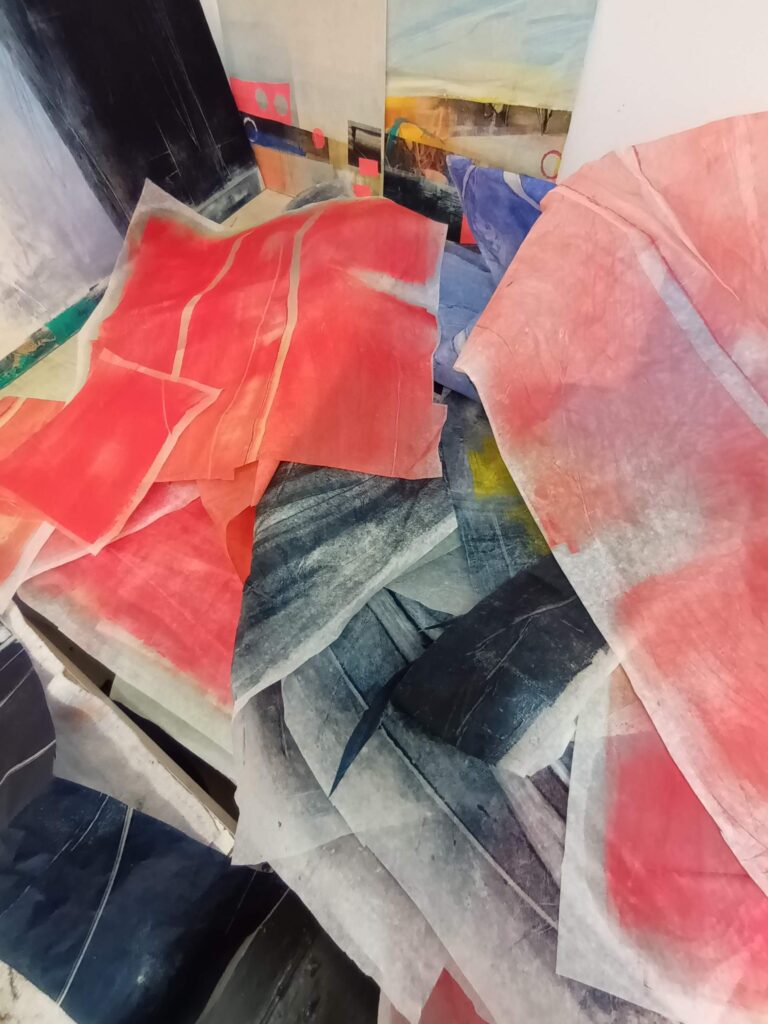I’m a big advocate for DIY, low-tech and home printmaking, but it doesn’t have to be all or nothing. I’m enjoying mixing home and studio practice- not least because of all the lovely people I get to meet at my local open print studio.
Most of my printmaking practice, since graduating in 2001, involved mono-printing by hand, at home. It’s how I worked out how to make my atmospheric, large prints on tissue paper- without studio rules or anyone looking over my shoulder!
In 2018, I was one of the recipients of the first Spike Print Studio/University of the West of England scholarships, and it led me to fall in love with etching all over again, specifically line work and especially the dark and and scratchy nature of drypoint (where a soft metal plate is scratched into, to make marks. You can only get a few prints from it.)
Now I dovetail the two practices, printing drypoint plates at Spike Print Studio with more experimental mark-making at home to make series of one-off prints. It works as follows:
The happy by-product of making hand prints at home is a (substantial) stash of collage papers, little pieces I’ve cut off other prints, ghost prints and roller marks. Sometimes I also purposely make larger mono prints knowing I’ll use them in a drypoint print.
Next in the circle of print that I’ve created, I’ll print a series of drypoint with a press at the open print studio in Bristol (Spike Print Studio), adding in some of my stash of mono-printed tissue paper as chine colle (collage added during printing), as well as sometimes monoprint marks on the plate itself. Essentially I try to get as much colour, texture and mark-making into one run through the press as I can- I’m impatient and like quick wins!



Once the prints are dry, they come back to my shed studio at home and I apply more mono print marks over the top. I often take ‘ghost prints’ onto tissue paper from the ink left on my surface and so add to my ‘library’ of beautiful textured papers ready to add as chine colle to the next series.
The series, therefore, have a common language of marks and colours that run through them. The two practices perfectly dovetail into one another, allowing for rich velvety line alongside gestural marks and texture- the pre-planned with the experimental and spontaneous. The one feeding into the other. So it doesn’t have to be one or the other, it can be a symbiotic to and fro. Chicken and egg.